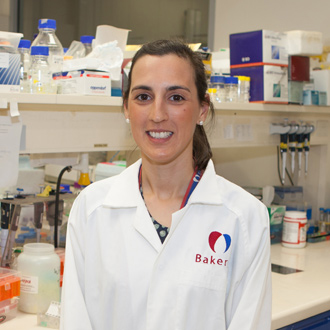About the Cardiac Hypertrophy laboratory
The Cardiac Hypertrophy laboratory focuses on understanding heart enlargement, cardiac hypertrophy, through comparisons between models of health and disease: examining the enlarged athletic heart (physiological hypertrophy) in comparison to heart enlargement associated with disease (pathological hypertrophy).
It is well understood that the hearts of athletes grow, the super fit have a heart size greater than the average person. This enlargement is of benefit to them in their training and works to enable them to continue their level of exercise and fitness. When they stop training that healthy heart growth stops and the heart returns to a normal size. Conversely, heart failure patients commonly experience heart growth but this change is devastating. It wreaks havoc and is usually impossible to reverse.
From this observation, the team's research has focused on understanding the changes in the athlete's heart that might benefit people with heart disease, whose heart growth might be caused by hypertension and/or heart failure. Associate Professor McMullen’s studies demonstrate there are changes in genes that occur in people with cardiac hypertrophy associated with heart failure that do not occur in the athlete's heart. She has established that even though there are comparable increases in heart size, there are clear molecular and histological changes between the two. The laboratory continues to identify genes causing heart enlargement that are good for the heart, as opposed to those genes causing heart enlargement with detrimental effects. The laboratory is now developing gene therapy approaches and testing small molecules which target these genes. In doing so she hopes to reproduce the work of the ‘good genes’ in the failing heart. Their research is novel in its suggestion that it is possible to promote and activate 'good' genes in the heart as opposed to just inhibiting ‘bad’ genes that cause the growth of the diseased heart.
The team's research involves:
- Understanding mechanisms in genetically modified mouse models of exercise and heart failure.
- Testing gene therapy approaches, small molecules and dietary approaches in heart disease mouse models.
Current therapeutics are largely treating heart failure by delaying disease progression. The goal of this team’s research is to improve function of the failing heart and protect it from complications such as atrial fibrillation.
Research focus
- Identify critical genes, proteins and lipids in the athlete's heart that provide protection.
- Identify 'druggable', heart-specific targets.
- Examine whether targeting protective mechanisms in the exercise trained heart can improve function of the failing heart. This is examined using a number of approaches (gene therapy, small molecules, dietary approaches).
- Examine sex differences in the heart.
- To reduce/rescue the incidence of atrial fibrillation.
- Target microRNAs to treat heart failure, atrial fibrillation and diabetic cardiomyopathy.
- Understanding how the heart can provide protection against obesity.







